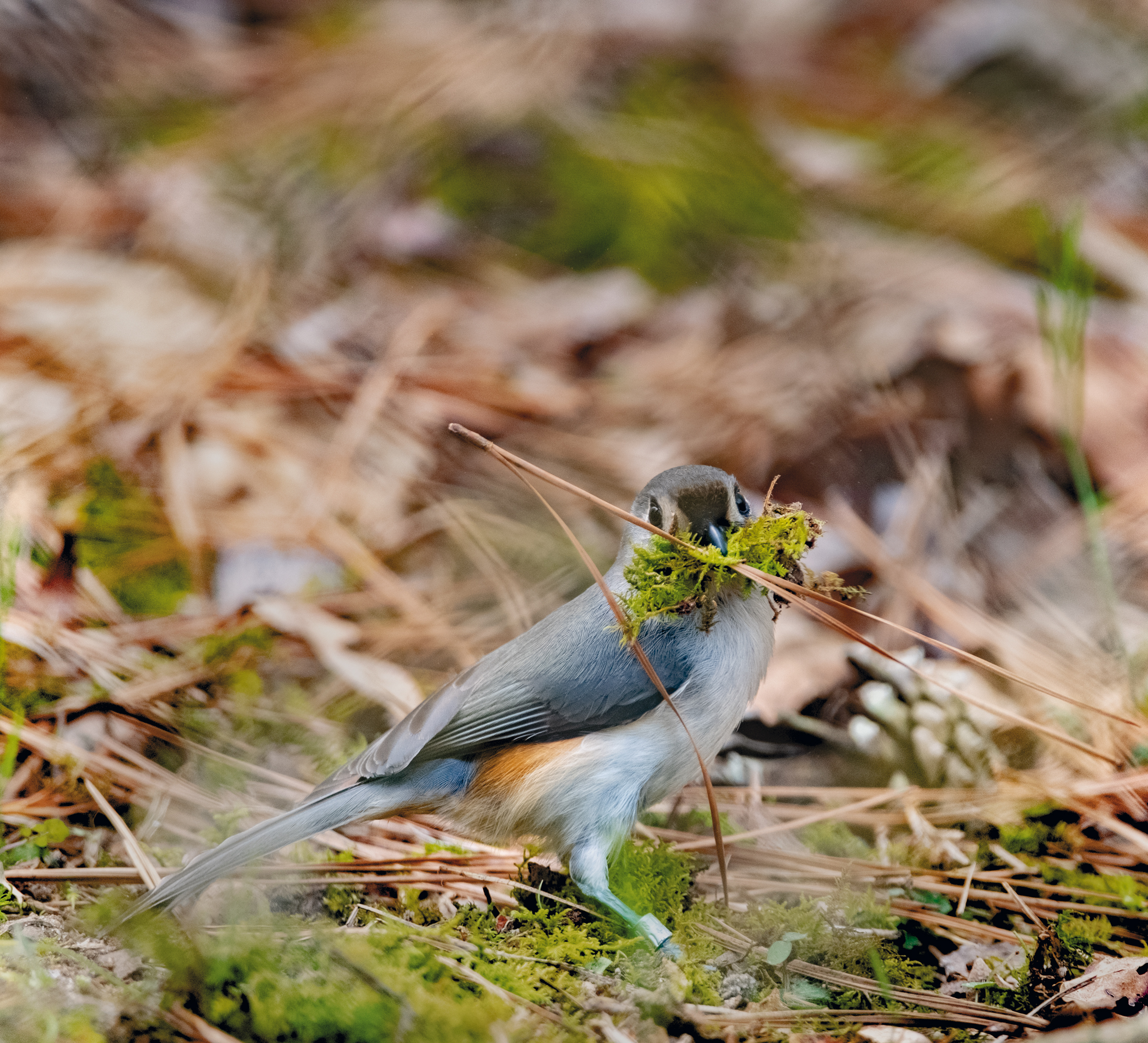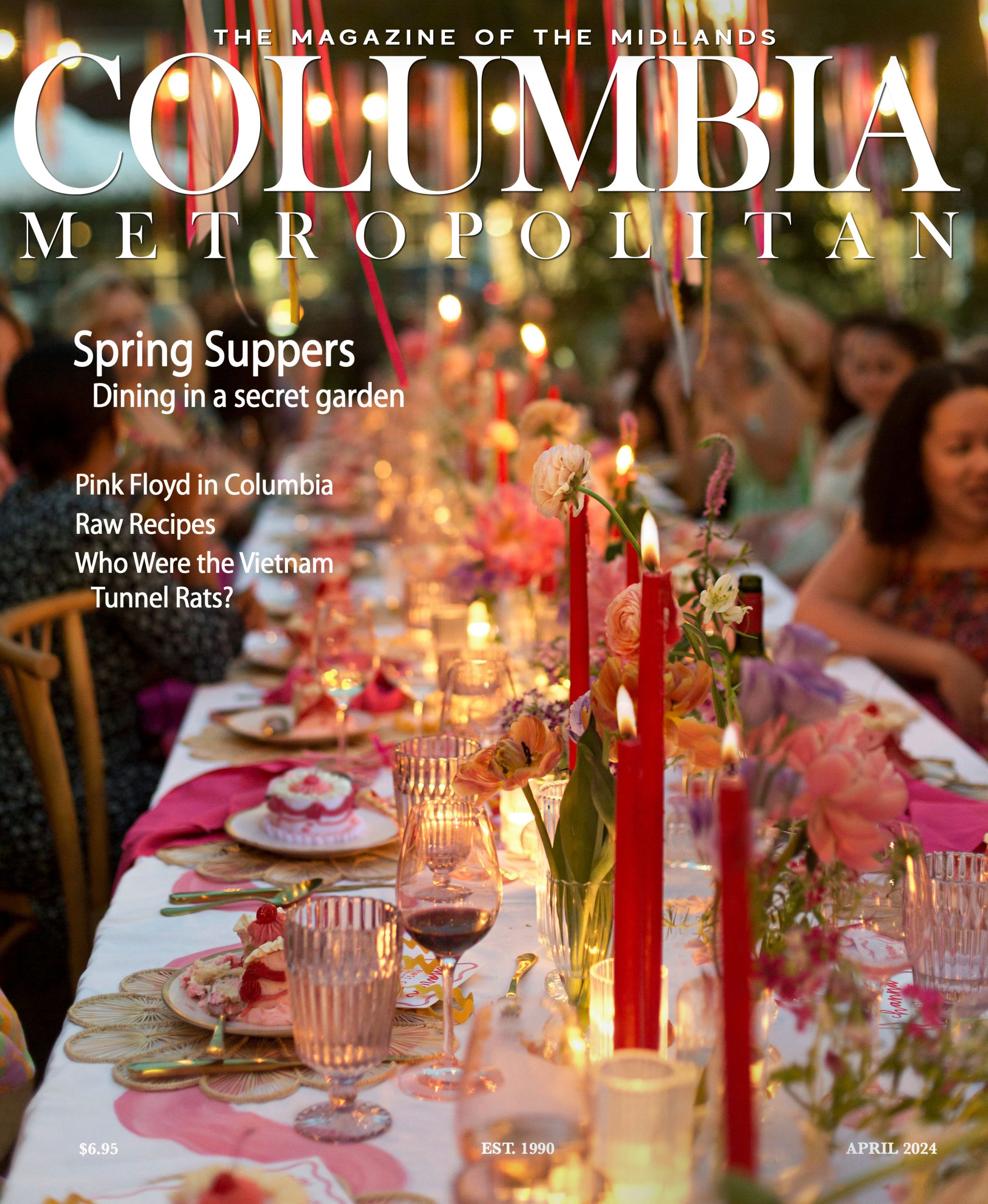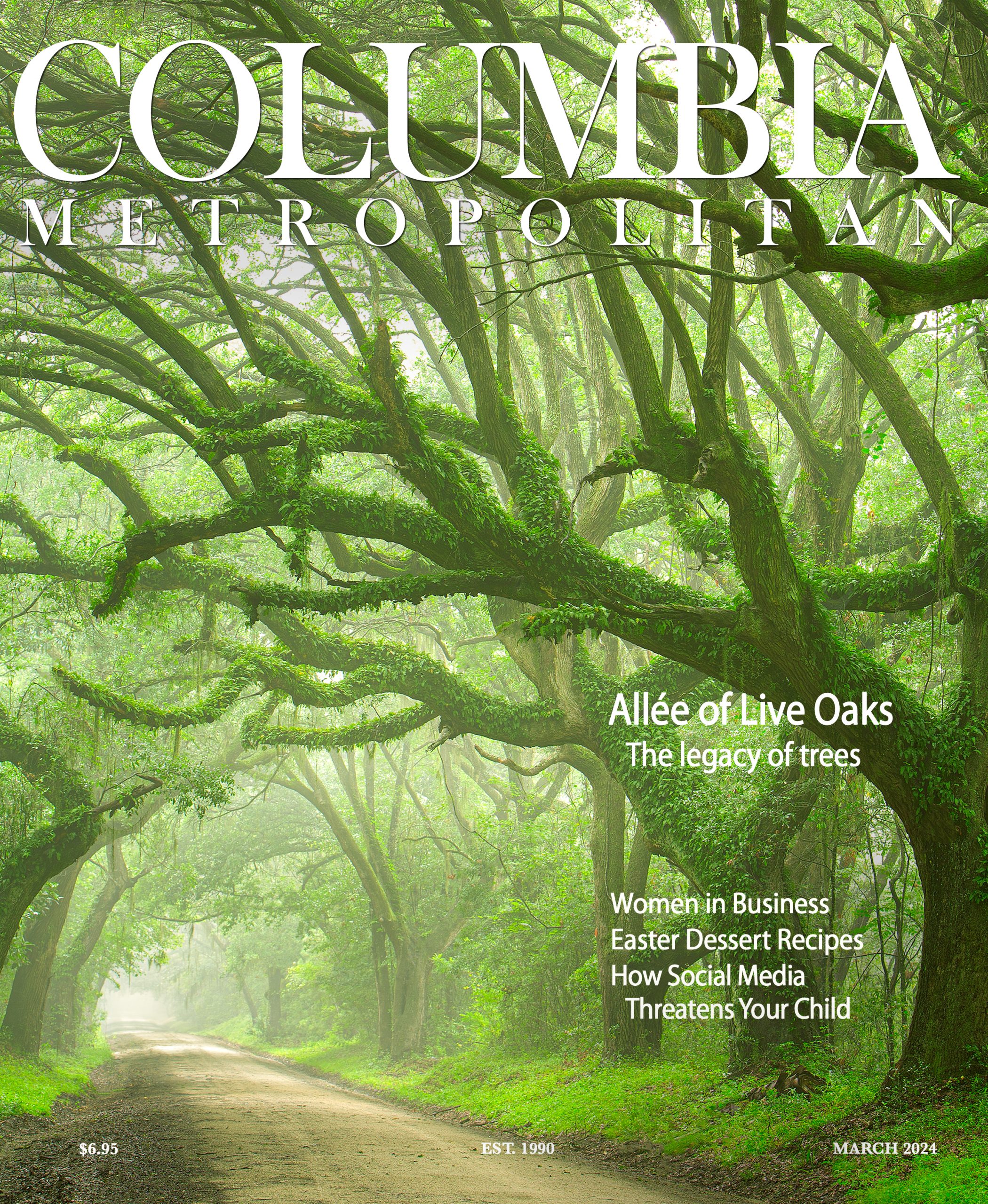
This tufted titmouse is banded, which allows scientists to track behavior, migration, populations, and more.
Deep in the heart of Columbia is a sanctuary. The W. Gordon Belser Arboretum is a 10-acre preserve tucked between Devine Street and Kilbourne Road with the mission to preserve its diverse habitats, serve as an outdoor laboratory for University of South Carolina students, and function as a conservation outreach center for visitors.
The Belser Arboretum is also a widely recognized birding hot spot. Yellow-rumped warblers, purple finches, red-bellied woodpeckers, and countless other species have been spied in and around this urban nature preserve.
Scientists track birds by placing tiny metal or plastic bands on a bird’s legs, as in the case of this bluebird. Each set of bands has a unique combination of colors and numbers that then allows scientists to track birds’ behavior, migration, populations, and more. The Bird Banding Laboratory in Laurel, Maryland, which was established in 1920 and is part of the U.S. Geological Survey, recently celebrated its 100th anniversary of collecting, archiving, and disseminating information from banded birds in North America.
So much can be learned about the world from these little winged creatures. Civilians who spot a banded bird are encouraged to contact the Bird Banding Laboratory, which keeps records of all reported encounters. With an average of 100,000 encounter reports submitted each year, scientists have access to a powerful and ever-growing archive to learn about the changing state of our natural environment.
In addition to the inherent joy birds add to our lives merely with their presence, each little bird you see carries a wealth of information about our world.
Anyone who spots a banded bird can be a citizen scientist by reporting the sighting through ReportBand.gov.










